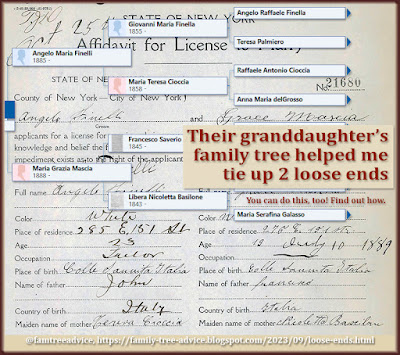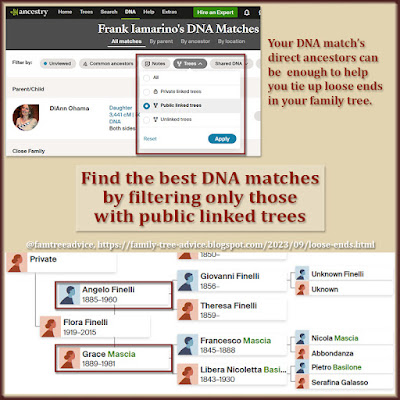I've mentioned the New York City Municipal Archives website a few times in this blog. It's about time I explained how to use this treasure.
I visited the archives at gorgeous 31 Chambers Street in Manhattan a couple of times. Before each trip, I used Ancestry.com to look up vital record certificate numbers for my relatives. The process at the archives was to find the right drawer and microfilm reel you needed to view. Then you scroll through to find your document.
 |
| Bring the genealogy treasures of this stunning archive right into your home. |
Not long ago, the NYC Municipal Archives granted access to many vital records online for free! I've downloaded hundreds of documents as PDFs. Then I extracted JPG images to place in my family tree. (See my note about this extraction near the end of this article.)
Here's a list of the NYC vital records you can find online:
- Bronx:
- births: 1872 to 1873, 1876, 1888 to 1891, 1895 to 1909
- marriages: 1898 to 1937
- marriage licenses: 1914 to 1931
- deaths: 1898 to 1948
- Brooklyn:
- births: 1866 to 1909
- marriages: 1866 to 1937
- marriage licenses: 1938 to 1949
- deaths: 1862 to 1948
- Manhattan:
- births: 1855, 1857 to 1861, 1863 to 1865, 1866 to 1909
- marriages: 1866 to 1937
- marriage licenses: 1908 to 1910, 1938 to 1949
- deaths: 1866 to 1867, 1871 to 1875, 1920 to 1948
- Queens:
- births: 1866, 1876, 1883, 1886, 1888 to 1909
- marriages: 1898 to 1937
- marriage licenses: 1938 to 1949
- deaths: 1881 to 1892, 1898 to 1948
- Staten Island:
- births: 1898 to 1909
- marriages: 1898 to 1937
- marriage licenses: 1908 to 1949
- deaths: 1898 to 1948
Only now do I realize they added marriage licenses this past Spring! I found on Ancestry that my grandparents got their marriage license on 29 Jun 1922, and it was #3410 in the Bronx. Entering that year and certificate number into the form I'm about to explain, I see their 4-page marriage license.
I'm eager to download as many licenses as I can.
Now let's look at two ways you can search the online archives.
Find a Certificate With the Number, Year, and Place
Use your favorite genealogy research site to find the number, year, and NYC borough of the certificate you want. Then go to https://a860-historicalvitalrecords.nyc.gov/search. Near the top of the web page, below the By Certificate Number heading:
- Select the type of certificate (birth, death, or marriage)
- Enter the certificate number (this is a required field)
- Select the borough: Kings (Brooklyn), Bronx, Manhattan, Queens, Richmond (Staten Island)
- Enter the year (this is not required, but it helps if you know it)
- Click the Search button
Here's an example you can try. Select Birth Certificate, enter certificate number 5490, choose the Bronx, and enter the year 1905. The result is my grandmother's brother Emilio's birth certificate.
Quick note about the year. I had trouble finding my grandparents 8 Oct 1922 marriage certificate because the city filed it in 1923. If it's late in the year, keep that in mind.
Find a Certificate by Name
If you don't have a certificate number for your search, scroll down the same page to find the By Name heading. In this search area, you have to enter only the Certificate Type and Last Name. You can select a borough and enter a year if you know it.
Here's an example you can try. Choose Death Certificate, enter the last name Saviano, and change the borough to Bronx. Click the Search button.
Every result on that page is my cousin or my cousin's spouse. The same is true if we search for Saviano births in the Bronx. But let's try a search that needs a little more work. This time let's search for any Bronx birth certificates with my maiden name, Iamarino. This gives us a page that says No Results. But we can fine-tune the search from here.
You have two options. (1) Change the Certificate Type, and/or narrow down the Year Range, and/or change the Borough and click the Update button. (2) Below the Update button, remove filters one at a time and see what happens. When I click to remove Birth Certificate as a filter, I get three results:
- My 3rd great uncle Francesco Iamarino's 1937 death certificate.
- My 2nd great uncle Giuseppe Iamarino's 1938 death certificate.
- My 1st cousin twice removed Peter Iamarino's 1920 marriage certificate.
You can see how a less-specific search can yield more results. But if your broad search uses a common last name, you can run into a roadblock. The search results show only the first 100 results. Sometimes that doesn't even get you to the letter C in the alphabetical list. Keep changing the variables until you get what you want.
Image Extraction
I mentioned earlier that I extract JPG images from the PDFs I download. I use a very old copy of Adobe Acrobat 9 Pro that makes image extraction easy. I can open a PDF, go to the File menu and choose Export, Image, JPEG. This gives me wonderful high-resolution images.
But most of you won't have Adobe Acrobat Pro. So I found instructions for exporting images using the free Acrobat Reader. Scroll down this page to see the 9 steps.
I hope this resource helps you locate the NYC members of your family tree.










